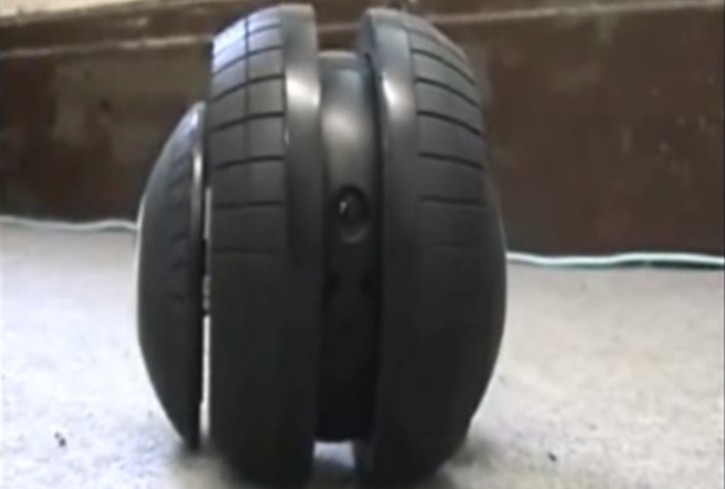When Warner Brothers and MGM announced they’re planning a reboot trilogy of the famous Stargate franchise this May, childhood memories suddenly came back. But now, seeing that the world is discussing producing some of the gadgets present in the movie really makes us feel old.
We’re sure you remember that circular device 22ft (6.7 meters) in diameter that creates a wormhole, enabling instantaneous transportation to another stargate located many light years away from the starting point. In the fictional world, it was called Stargate and human beings had at least two of them on the planet.
No, we’re not here to talk about some science fiction series, but that is exactly what we thought of the moment we heard about Japan’s new surveillance robot. A project running under the Japanese Ministry of Defense’s Technical Research & Development Institute (TRDI), the Throwable Type Reconnaissance Robot is a grenade-shaped device about 50 percent bigger than a softball.
It was designed for self defense purposes, mainly for the army. It is literally being tossed into hazardous environments where humans could be in danger in order to take a first look in the surroundings. The 4.3 in diameter (11cm) robot weighs 1.5 lbs (670g) and is coated in rubber for protection. Once it lands where it’s supposed to, two wheels flip out from the sides allowing it to roam around via remote control with a 66 to 98 ft (20 to 30 m) range.
There still are some problems they need to improve, things such as its inability to overcome obstacles over 1 in (3cm) such as steps or larger debris, and also its rather low capacity battery that will only last for about 20-30 minutes. TRDI also claims they want to make the unit simpler so that it could be repaired in the field faster.
You see, it’s exactly like that hovering spyball technology the Stargate SG-1 team were always sending through the wormhole first, to see if their next planet destination is safe to travel to. Well, maybe it’s not that advanced yet and perhaps the Stargate is only a dream we all have, but the two devices do look alike, you have to give us that.
No, we’re not here to talk about some science fiction series, but that is exactly what we thought of the moment we heard about Japan’s new surveillance robot. A project running under the Japanese Ministry of Defense’s Technical Research & Development Institute (TRDI), the Throwable Type Reconnaissance Robot is a grenade-shaped device about 50 percent bigger than a softball.
It was designed for self defense purposes, mainly for the army. It is literally being tossed into hazardous environments where humans could be in danger in order to take a first look in the surroundings. The 4.3 in diameter (11cm) robot weighs 1.5 lbs (670g) and is coated in rubber for protection. Once it lands where it’s supposed to, two wheels flip out from the sides allowing it to roam around via remote control with a 66 to 98 ft (20 to 30 m) range.
It could save lives
Designed with a built-in camera with near infrared night vision, the surveillance system has a range of about 7 to 10 ft (2 to 3m) in pitch-dark surroundings. There is also a microphone on board to pick up any nearby conversations or calls for help such as those from survivors of a disaster.There still are some problems they need to improve, things such as its inability to overcome obstacles over 1 in (3cm) such as steps or larger debris, and also its rather low capacity battery that will only last for about 20-30 minutes. TRDI also claims they want to make the unit simpler so that it could be repaired in the field faster.
You see, it’s exactly like that hovering spyball technology the Stargate SG-1 team were always sending through the wormhole first, to see if their next planet destination is safe to travel to. Well, maybe it’s not that advanced yet and perhaps the Stargate is only a dream we all have, but the two devices do look alike, you have to give us that.

